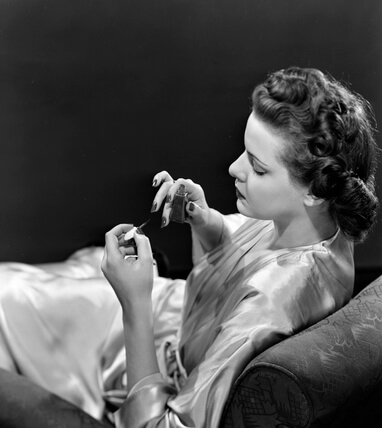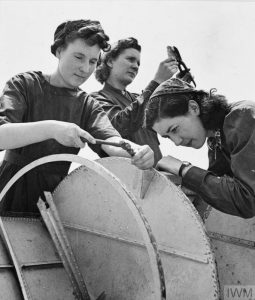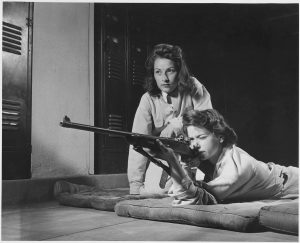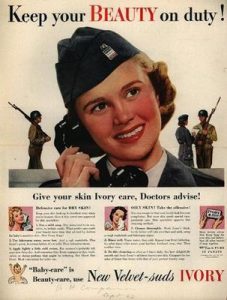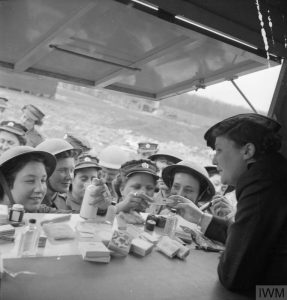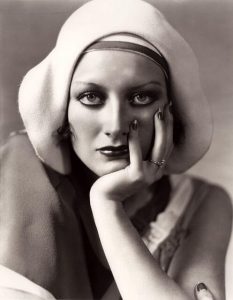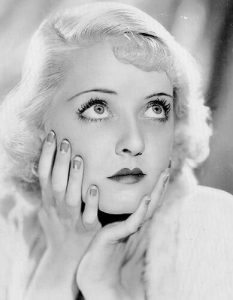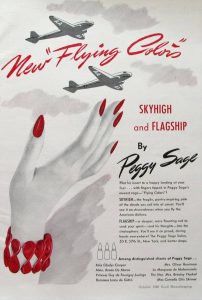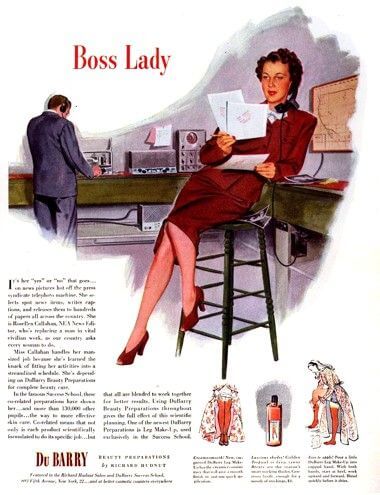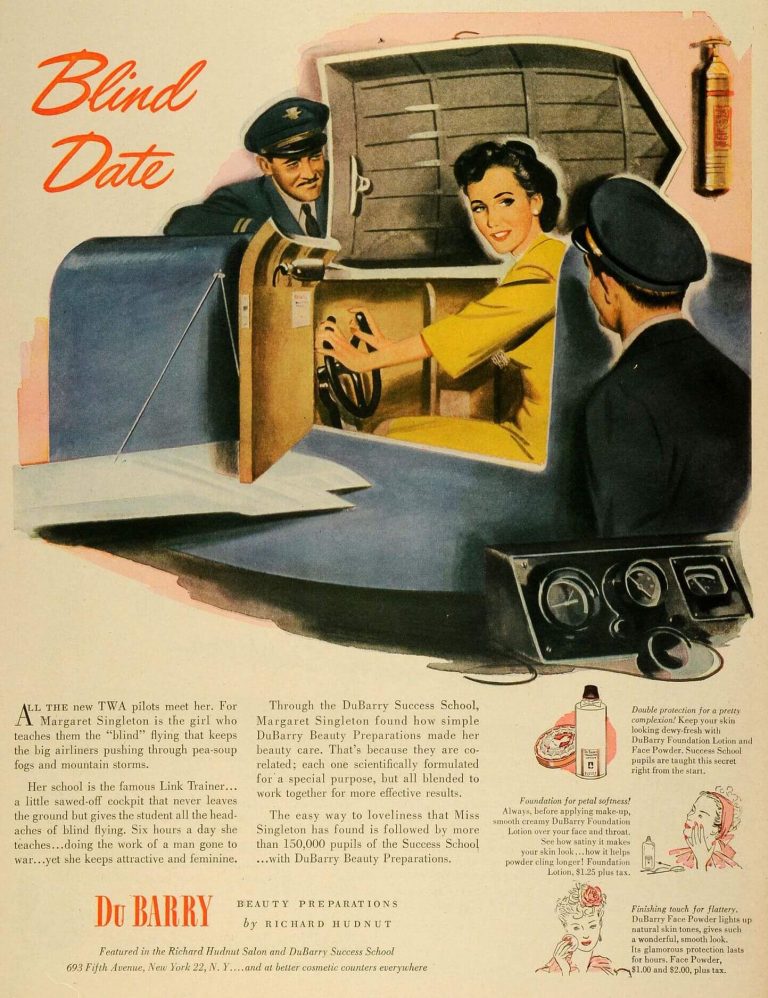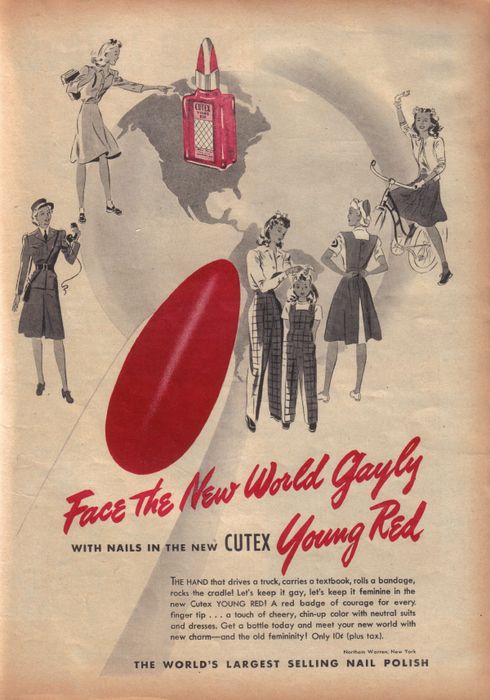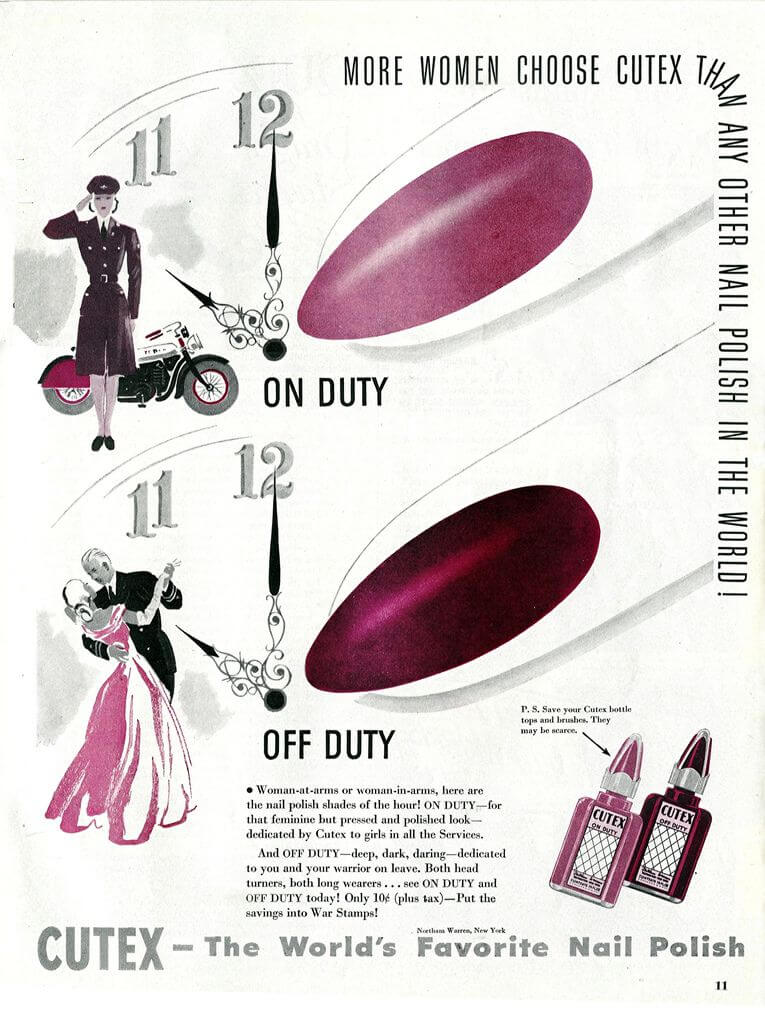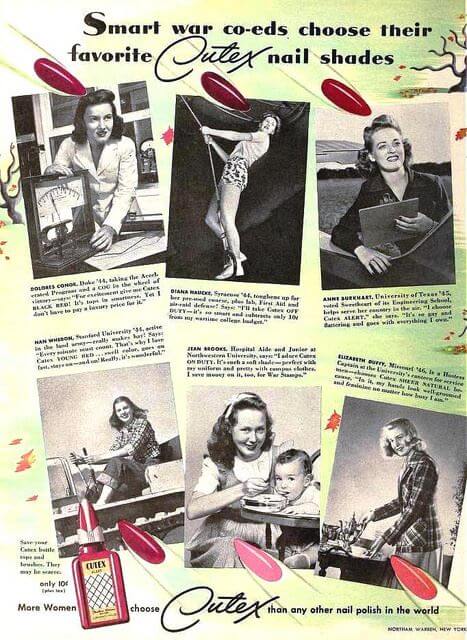Keep Your Beauty on Duty:
The Popularity of Nail Polish During WWII
We use fashion to shape our identities, and whilst our clothing is an important part of this, the smaller details we create are also a part of this expression. Painting our nails has become the perfect tool to emphasise our feminine side, to show the world our elegance and our sex appeal. The history of nail polish teaches us about why it is so important to us.
At the beginning of the war, rationing meant that women only had access to a limited supply of beauty products as the materials were diverted to weapons manufacture. In 1940, Britain cut its production of cosmetics to just a quarter of pre-war output, and in 1942, the United States passed law reducing all beauty products by 20%. Both governments felt that in the face of total war, lipsticks and nail polish were not a valuable use of resources.
However, whilst men were drafted into fighting on the frontlines, women were staffing the empty munitions factories back at home. With work came wages and sales of cosmetics increased. In the US alone they went from $400 million to $600 million. The perception of make-up began to change. Where women were first told “Buy nothing for your pleasure or comfort” now they were being asked to “keep your beauty on duty”. Cosmetics helped to boost morale for both men and women.
Working environments like factories and offices were not suitable places to dress up. Uniforms and health and safety restrictions meant that hair and make-up styles were limited. Women began to emphasise what they could colour and change, and nail polish became an increasingly popular way to express their femininity.
A popular design of the time was known as the “half-moon” manicure, painting the middle of the nail and leaving the tip and the root of the nail in a crescent moon shape. This elegant design was also practical. One avoided the polish chipping at the edge, and kept the cuticle healthy. Pink had always been a standard colour for elegance but a new trend from Paris brought bright red to the market. Red quickly became the wartime standard, the colour of passion matching the spirit of the war effort. Later, colour-coordination became a key point in fashion and matching clothes, shoes, and nails were essential. This pushed the industry to produce a wider variety of colours for more women to enjoy painting their nails with.
Women’s changing role in society from housewife to vital part of the economy was also reflected in the advertisement industry. Advertisements began to portray independent women expressing their feminine side. Du Barry beauty adverts of the time featured working women showing their manicures and pedicures. The nail industry’s biggest supplier Cutex also published images appealing to women to choose their nail colour to match whatever situation.
We can only see our own hair and make up in the mirror, perhaps this is why we worry so much when we are out. However, our nails are always in sight wherever we are: at work, on the train, in a romantic situation. Our nails are a consistent reminder to us that we look fantastic, and help us to feel our best selves. And it was the same during the war, always in sight while brave women worked to ensure the freedom we enjoy today.


